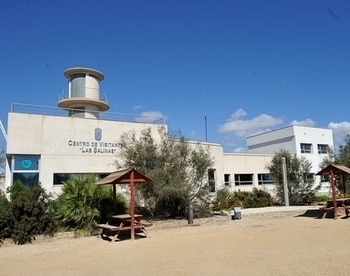- Region
- Águilas
- Alhama de Murcia
- Jumilla
- Lorca
- Los Alcázares
- Mazarrón
- San Javier
-
ALL AREAS & TOWNS
- AREAS
- SOUTH WEST
- MAR MENOR
- MURCIA CITY & CENTRAL
- NORTH & NORTH WEST
- TOWNS
- Abanilla
- Abarán
- Aguilas
- Alamillo
- Alcantarilla
- Aledo
- Alhama de Murcia
- Archena
- Balsicas
- Blanca
- Bolnuevo
- Bullas
- Cañadas del Romero
- Cabo de Palos
- Calasparra
- Camping Bolnuevo
- Campo De Ricote
- Camposol
- Canada De La Lena
- Caravaca de la Cruz
- Cartagena
- Cehegin
- Ceuti
- Cieza
- Condado de Alhama
- Corvera
- Costa Cálida
- Cuevas De Almanzora
- Cuevas de Reyllo
- El Carmoli
- El Mojon
- El Molino (Puerto Lumbreras)
- El Pareton / Cantareros
- El Raso
- El Valle Golf Resort
- Fortuna
- Fuente Alamo
- Hacienda del Alamo Golf Resort
- Hacienda Riquelme Golf Resort
- Isla Plana
- Islas Menores & Mar de Cristal
- Jumilla
- La Azohia
- La Charca
- La Manga Club
- La Manga del Mar Menor
- La Pinilla
- La Puebla
- La Torre
- La Torre Golf Resort
- La Unión
- Las Palas
- Las Ramblas
- Las Ramblas Golf
- Las Torres de Cotillas
- Leiva
- Librilla
- Lo Pagan
- Lo Santiago
- Lorca
- Lorquí
- Los Alcázares
- Los Balcones
- Los Belones
- Los Canovas
- Los Nietos
- Los Perez (Tallante)
- Los Urrutias
- Los Ventorrillos
- Mar De Cristal
- Mar Menor
- Mar Menor Golf Resort
- Mazarrón
- Mazarrón Country Club
- Molina de Segura
- Moratalla
- Mula
- Murcia City
- Murcia Property
- Pareton
- Peraleja Golf Resort
- Perin
- Pilar de la Horadada
- Pinar de Campoverde
- Pinoso
- Playa Honda
- Playa Honda / Playa Paraíso
- Pliego
- Portmán
- Pozo Estrecho
- Puerto de Mazarrón
- Puerto Lumbreras
- Puntas De Calnegre
- Region of Murcia
- Ricote
- Roda Golf Resort
- Roldan
- Roldan and Lo Ferro
- San Javier
- San Pedro del Pinatar
- Santiago de la Ribera
- Sierra Espuña
- Sucina
- Tallante
- Terrazas de la Torre Golf Resort
- Torre Pacheco
- Totana
- What's On Weekly Bulletin
- Yecla


- EDITIONS:
 Spanish News Today
Spanish News Today
 Alicante Today
Alicante Today
 Andalucia Today
Andalucia Today
article_detail
Los Imbernones, San Pedro del Pinatar
Pedanías in San Pedro del Pinatar, Los Imbernones
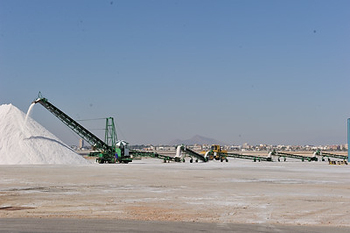 There´s very little in the way of physical evidence of historical data relating directly to the pedanía of Los Imbernones, although the key events in the history of the municipality as a whole ( see History of San Pedro del Pinatar) will undoubtedly have played out in the pedanía as well.
There´s very little in the way of physical evidence of historical data relating directly to the pedanía of Los Imbernones, although the key events in the history of the municipality as a whole ( see History of San Pedro del Pinatar) will undoubtedly have played out in the pedanía as well.
It´s main importance today is as the location for the majority of salt production remaining in the Mar Menor area.
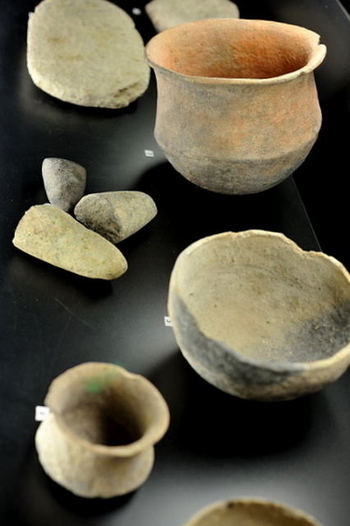 It´s proximity to the pedanías of El Mojón, the Salinas and the Mar Menor itself mean that Phoenician, Greek, Carthaginian and Roman cultures all passed through, bearing cargoes of silver, lead, esparto, salt and saltfish products, leaving traces of their passage in neighbouring pedanías.
It´s proximity to the pedanías of El Mojón, the Salinas and the Mar Menor itself mean that Phoenician, Greek, Carthaginian and Roman cultures all passed through, bearing cargoes of silver, lead, esparto, salt and saltfish products, leaving traces of their passage in neighbouring pedanías.
During the Roman occupation, San Pedro became an important Roman industrial villa, concentrating on exploiting the salt flats, the salting of fish and the production of garum sauce.
In the later years of the Moorish reign in southern Spain ( 719AD to 1243AD)the area became important again, due to both the salt flats and the “encañizada” fishing technique which the Moors had introduced.
In the 13th century Alfonso XI described El Pinatar as a thickly wooded area, where wild boar were hunted in the winter.
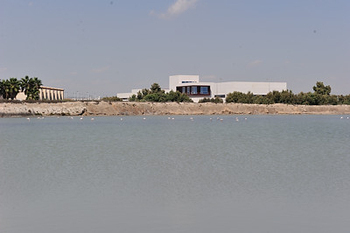 By the 15th century it had become the main port serving Murcia, and wheat arrived here to feed the population of the region. It was the city of Murcia which was in charge of the administration of the fishing activities and fish markets, and the area suffered depopulation in the 16th and 17th centuries when the coastal zones were made insecure by the frequent Berber pirate raids.
By the 15th century it had become the main port serving Murcia, and wheat arrived here to feed the population of the region. It was the city of Murcia which was in charge of the administration of the fishing activities and fish markets, and the area suffered depopulation in the 16th and 17th centuries when the coastal zones were made insecure by the frequent Berber pirate raids.
However, by the end of the 18th century peace and prosperity had been restored, and the population doubled between 1771 and 1798, thriving on the economic activities of fishing, farming and salt production, as well as the sheep’s wool from the pasture land and varied non-irrigated agriculture.
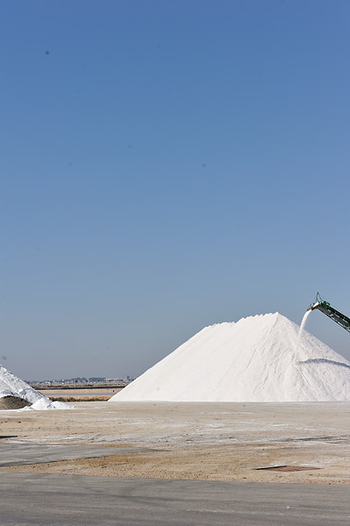 The start of the 19th century was marked by a series of disasters, including droughts which brought hunger and occasional torrential rain which flooded the area.
The start of the 19th century was marked by a series of disasters, including droughts which brought hunger and occasional torrential rain which flooded the area.
In 1836, the municipality of San Pedro del Pinatar gained its independence, the first Mayor being José Imbernón, most likely a member of the family after whom Los Imbernones was named.
At this period it was common practice to name an area after the main family occupying the land, and many hamlets across the region are named in this way.
By the end of the century, there was an unusual mix in the local population of simple fishermen and salt flat workers on the one hand, and illustrious social figures on the other, rich families owning holiday property used in the summer months.
These latter were the pioneers of tourism in San Pedro, which in the second half of the 19th century attracted both members of the aristocracy and the farmers from the Huerta of Murcia.
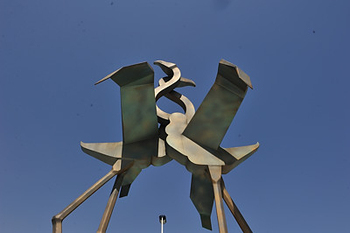 In the course of the 20th century the population of San Pedro del Pinatar continued to work in fishing and agriculture, although farming became more and more difficult due to droughts and the lack of available land.
In the course of the 20th century the population of San Pedro del Pinatar continued to work in fishing and agriculture, although farming became more and more difficult due to droughts and the lack of available land.
In the 1970s, though, the phenomenal growth of tourism converted the municipality into an area of rapid growth, becoming a highly desirable area for those looking to build or buy a second home. Now, in the 21st century, the area of Los Imbernones is a group of dwellings next to the entrance to the Parque Regional de Las Salinas, surrounded by new buildings and green areas. Most of the summer visitors continue to be from Murcia and Madrid, and among the small businesses are a bar-restaurant and a plant nursery.
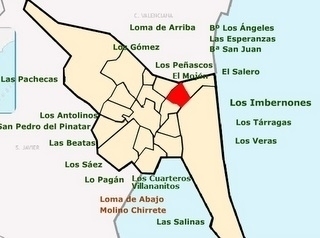 The economy of Los Imbernones is based on the salt industry which provides employment to a large percentage of the population, as well as the service sector, working in the hotels, bars and restaurants which cater for tourism visitors.
The economy of Los Imbernones is based on the salt industry which provides employment to a large percentage of the population, as well as the service sector, working in the hotels, bars and restaurants which cater for tourism visitors.
Where is Los Imbernones?
Click for map, Area of Los Imbernones, San Pedro del Pinatar
article_detail
Contact Murcia Today: Editorial 000 000 000 /
Office 000 000 000


